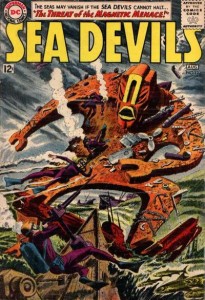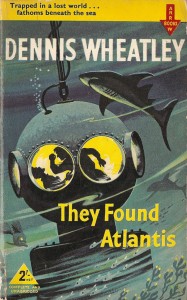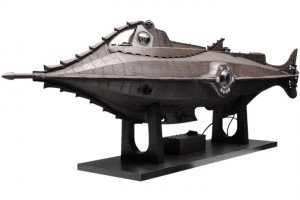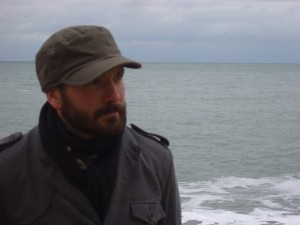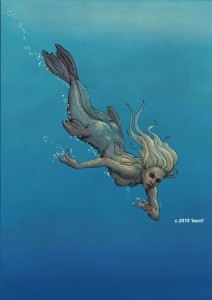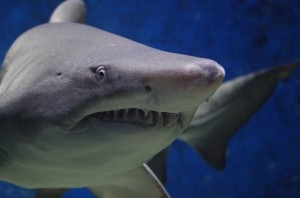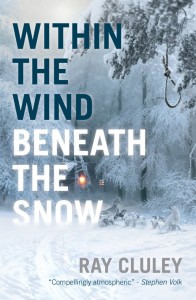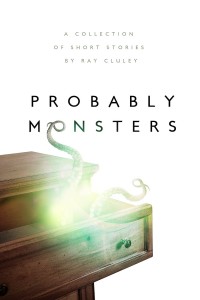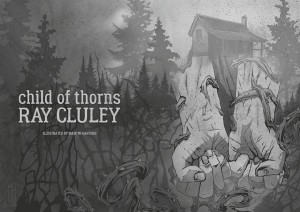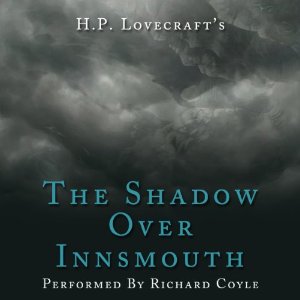The voyage so far: Matt Willis, author of Daedalus and the Deep, has been ushered into the presence of the commander of HMS Longdog. The commander, who has outlived five ship’s surgeons and is quite insane, assumes that Mr Willis is the sailing master and insists on taking the ship closer to the rocks, despite a lee shore…
A quick note for recent visitors
As we have a number of new listeners aboard, we should explain that greydogtales is the highest-rated website dedicated to lurchers, weird fiction and art in the world! Clearly, no-one else was deranged enough to attempt such a thing. But we do have a large following of enthusiasts from Australia to Argentina, Los Angeles to Leamington Spa. So you are part of history now, at least.
Lurchers and longdogs crop up here on a regular basis, but in between you will find regular features and interviews covering weird modern fiction, classic supernatural tales and fantastic art. Plus occult detectives, cool comics, strange audio links and so on. And occasionally we talk about the commander’s own writing.
Dog-oriented people who consider themselves adventurous may also wish to check out the starring role of Bottles the Lurcher in one of our exciting free Sandra’s First Pony stories. It’s not that frightening, it’s just not normal, so we did warn you. Click here if you dare: something annoying this way comes
Interview with Matt Willis
Time to get cracking. Matt Willis’s exciting nautical fantasy, Daedalus and the Deep, is our excuse today, and he has kindly joined us to talk about his work. This is, in a way, a Part One, because we also have a new article from him, The Sea Serpent Paradox, coming up in a couple of days. Here’s the interview first, to set the scene…
greydog: Welcome to greydogtales, Matt. Of all our contributors to Stranger Seas so far, you are probably the most qualified so far to talk about the theme in real life. Maybe you could set the scene by saying a bit about your maritime background.
matt: Hello! I come from a small village near the sea in Essex, a few miles from Harwich, which is a very old sea port on the East Coast. My grandparents’ house looked down on the port and I used to spend hours watching the ships coming and going. Later I joined the Sea Scouts there and sailed racing dinghies in the bay, having a lot of fun and not much success.
greydog: Does your familiarity with the sea make nautical fantasy and horror have less impact, or do you still get that shiver down the spine?
matt: I don’t know about less impact – perhaps more if anything, as if you’ve lived near the sea and spent some time on it, you get a sense of how eerie and scary it can be. I remember sailing on a completely fog-bound estuary, suddenly realising I had very little sense of which direction the shore was in. The only sounds were the lap of the waves and a dredger scooping out the channel. I don’t know if you’ve ever heard a dredger but they make the most unearthly moaning, screeching sound.
It put me in mind of the Ray Bradbury story ‘The Fog Horn’, where an ancient sea beast is awakened by a lighthouse foghorn, which is a very atmospheric and tense tale. It’s a cliché that the sea has moods, but it’s true. Even when it’s calm, there’s a latent power there, and who knows what’s over the horizon? That ‘blank’ can really feed the imagination, and not always in a healthy way.
greydog: We mentioned The Foghorn in our post on The Beast from 20,000 Fathoms not long ago (seven things that shaped a childhood). Now, we thoroughly enjoyed Daedalus and Deep, your first novel. It’s an unusual book. Enthusiasts of C S Forester and Patrick O’Brian could read it purely as a rousing naval adventure. Given the level of detail, this must have taken a lot of research into historical procedures.
matt: Thank you! It was very much written as a ‘straight’ nautical historical novel, and I approached it in exactly the same way I would have done without any fantastical elements. I’ve read some fantasy novels with nautical elements, and for me they didn’t necessarily satisfy the sea-dog in me. Readers of nautical fiction are notoriously hard to please, and I wanted that audience to be able to read my book without wincing. It did take a fair bit of research, but this period, the Navy and sailing ships generally have always fascinated me so I had a fair bit of basic knowledge to start with, which helped a lot. Much of it was book research, but I also made sure to visit some contemporary preserved ships, just to get a feel for the environment. I did want it to be readable for people who weren’t hardcore Forester/O’Brian fans as well though, and I hope it works as a story for those readers too.
greydog: But Daedalus is also a fantasy novel, which takes the less-travelled route of combining the fantastical with the real British navy of the time. What brought up the idea of combining the two genres?
matt: I started with the story, which was the ‘real’ sea serpent sighting reported by Daedalus in 1848. That rather dictated the way the book turned out, rather than deciding that I wanted to write a book that combined historical-fiction and fantasy elements. That said, I probably could have made it less ‘crossover’ by not giving the sea serpent a POV in the book. I couldn’t resist that though, and the first ‘voice’ that came to me in the writing was that of the sea serpent.

greydog: And the sea serpent is a major element of the book, which is as much as we can say without giving too much away. As the tale progresses, a number of texts are referred to by the ship’s officers. Are these all genuine references, or a mixture of history and your own creations?
matt: Most of the tales and research that the crew uncovers are based on real stories. When I was researching the sea serpent aspects, it surprised me how closely some of the historical sightings matched the description given by HMS Daedalus’ officers, so I decided to make that an element of the book. One thing that cropped up when I was looking into the real history was that reports of sea serpent sightings fell dramatically when steam power started to supplant sail.
greydog: We also liked the feel of a navy on the edge of change, with the advent of new technologies, and your own thesis concerned science and the late 19th/early 20th century novel. Have you ever considered going full-tilt at this and writing nautical steam-punk?
matt: I’d love to do something like that. I’m a bit of a fan of China Miéville’s ‘Bas-Lag’ novels which have a wonderful steampunk feel, particularly The Scar, which is heavily nautical. I don’t know how I’d get into that world, but one day a story might present itself to me that suits that kind of treatment. A friend of mine, William Angelo, is writing a wonderful piece at the moment, set in an alternative Edwardian world where a lot of 20th century scientific advances were made some time earlier, following a nationalist revolution. His world-building is amazing, and very inspirational. I’m also tempted by diesel-punk, as I love zeppelins – there’s a big affiliation between airships and navies as well, and development of rigid airships tended to be driven by naval requirements rather than land-based armies. Maybe a sort of alternative late 19th century war at sea and in the air… Watch this space, I suppose!
greydog: That sounds a damned fine idea. You have a number of irons in the galley fire, including your novel, short stories, naval air history and motorsport journalism. Which is closest to your heart?
matt: Non-fiction writing is ruled by my head, fiction by my heart. I love writing non-fiction history, but fiction allows me to actually imagine myself into those times. I’ve been writing a book about the P-51 Mustang for several years, and still haven’t finished it, but that inspired an historical novel about an attack pilot and a war correspondent in Italy in 1943. When my heart takes over, it’s fiction all the way, but the different forms of writing aren’t completely divorced. They use similar muscles.
greydog: Tell us something about the collection A Seeming Glass, and the Random Writers. We’d not come across them before.
matt: The Random Writers are exactly like The Avengers, and I’m very much in the Thor role. Actually, we’re more like a bunch of people who find creating weird and wonderful fictional worlds preferable to real life, and we encourage each other. Originally the group was set up through the Writers’ Workshop ‘Word Cloud’ by J A Ironside, mainly for like-minded writers to share ideas, critique each other’s work and generally for moral support. A couple of years ago now I noticed that several short stories people had brought to the group had similar themes and suggested we do an anthology. That idea was seized upon, and the first anthology, A Seeming Glass, came out in 2014. The idea behind that was to take a familiar story and do something unfamiliar with it. We enjoyed doing it, and it seemed to go down pretty well, so we did a second one, Something Rich And Strange: The Past Is Prologue, and that came out just before Christmas. The theme of the second one was ‘what happened after The End?’ in existing stories.
greydog: We always like to find out what authors read in their own field. Which fantasy, weird and/or nautical writers do you most admire?
matt: In fantasy, I particularly love Joe Abercrombie and Jen Williams at the moment. Both are very different writers but manage to produce well-paced fantasy that’s convincing and gritty, but can be humorous and make you smile too. I love everything Stephen Baxter does, and I’d have to say the way he can blend historical fiction seamlessly with SF/F is a big inspiration to my own writing. In nautical circles, Alaric Bond’s Fighting Sail series is my favourite current work – Alaric takes a slightly different approach to the traditional one, by having a range of voices in each of his novels from people from lower deck to Captain, and sometimes on both sides too. I’m also a long-time fan of Richard Woodman, who lives near where I grew up and has written many fantastic nautical novels. He’s very well known in the area, but deserves to be placed alongside the greats of the genre in my view.
greydog: We know Woodman’s work – there are indeed some very good novels by him. So, to the future – we believe that you have plans for a follow-up to Daedalus. Are you taking characters from the first book forward, or will you be heading in an entirely new direction?
matt: I do have plans for a sequel to Daedalus, which is all somewhat stalled because of some issues that I won’t go into here. The idea was to take some of the characters from that book forward a few years later, with a similar treatment of real but weird and unexplained events. However, that might now not happen for various reasons. I am thinking of going back to that world in a different way, however, possibly with a radically different approach.
greydog: Finally, as you’re our only interviewee ever to write about aviation, we’re going to end completely off-topic and mention the English Electric Lightning. With its striking profile and astonishing climb rate, this was the iconic plane of our youth – posters in comics annuals, a print on the wall at home, etc. Any views?
matt: I agree – the Lightning was everything a fighter should be. Power, presence and charisma. It’s one of my eternal regrets that I never saw one display. Around the time I started going to airshows, I probably could just have caught one before they retired, but I was far too interested in WW2 warbirds at the time. There are a couple at Bruntingthorpe that do fast taxi runs with the afterburners lit, so that might be a consolation one of these days. There was just something so unique about it. Ah well. I did see a Buccaneer display at Duxford, and the Vulcan at Southend back in 1990 – and spent much of the last eight years chasing the Vulcan round the country. I keep hoping one of the countries that still operates MiG 21s will bring one to the UK, as that would at least be the Lightning’s on-paper adversary and contemporary.
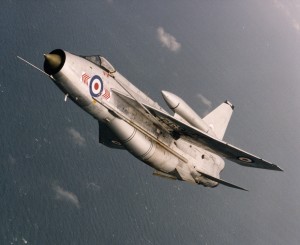
greydog: Thank you very much, Matt Willis.
Amazon author page: matthew willis
Website: http://airandseastories.com
Twitter: @navalairhistory, @Random_Lands
Facebook: www.facebook.com/daedalusandthedeep
A link to pick up Daedalus and the Deep can be found on the right-hand side bar. As we mentioned above, Matt has gone beyond the call of duty and also written an excellent article on the subject of sea serpents for greydogtales, so call back soon.
####
On an unrelated topic, we featured the fun anthology Spawn of the Ripper not long ago (spawn of the ripper: the true story), and crept warily through some of the classic horror films which inspired the collection. We can now add that according to Rick Leider, one of the authors, his story Nightwork was inspired by the earlier film The Ghoul (1933), starring Boris Karloff and Cedric Hardwicke.
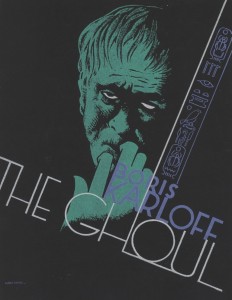
In accordance with our trivia obsession, we should point out that you must always keep an eye on the vicar in films like this. Here the vicar is played by none other than Sir Ralph Richardson. This was Richardson’s first credited film role, and is rather fitting. His mother was a devout Roman Catholic and wanted him to enter the priesthood. As a teenager, Richardson was sent to a Xavieran college for trainee priests, but ran away to become an actor. Well, eventually. Three years later, Richardson would work with Cedric Hardwicke again in Things to Come, the wonderful Korda adaptation of the H G Wells story.
We’re done. Remember , stay on this wavelength, and Do Not Go Outside – except to walk the lurcher…
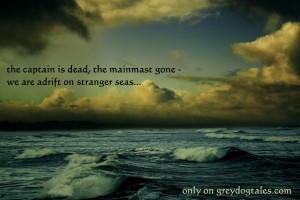

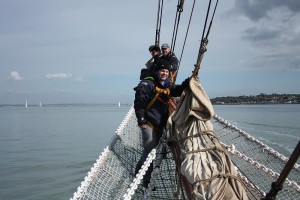

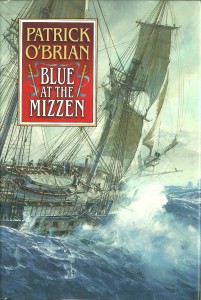
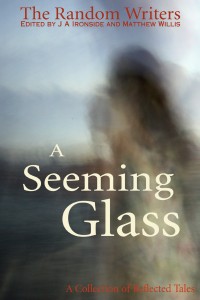
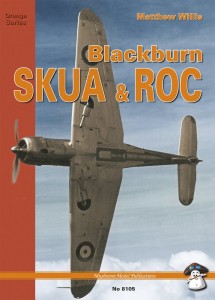
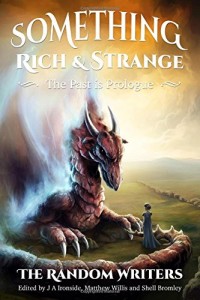
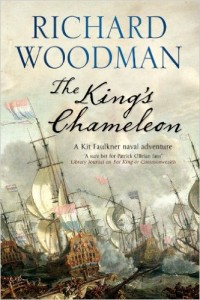
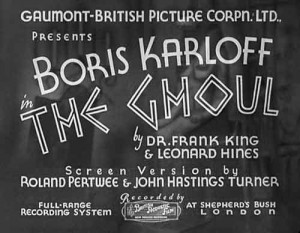
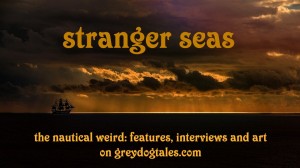
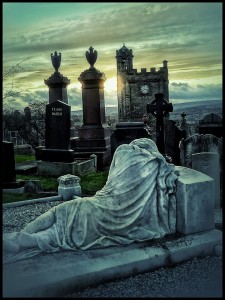
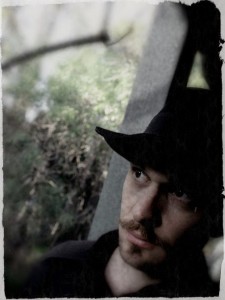
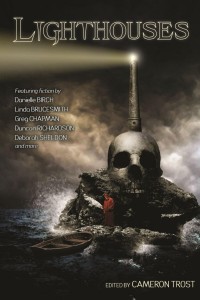



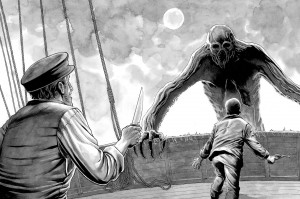

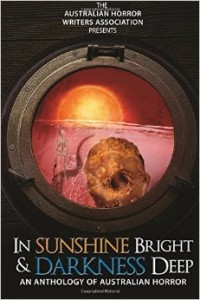
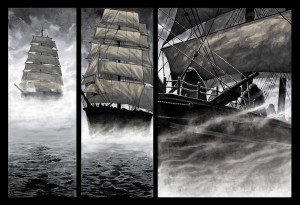


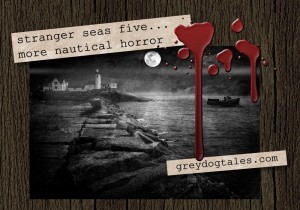
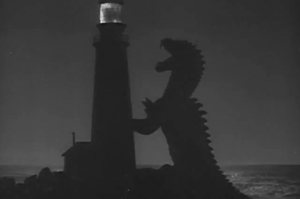
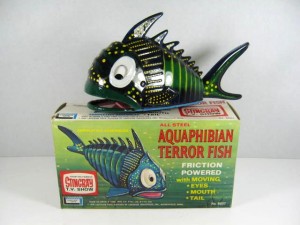
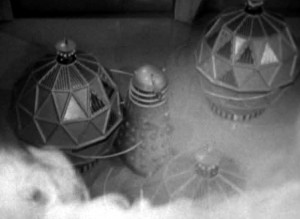
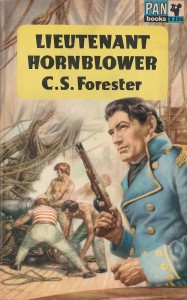

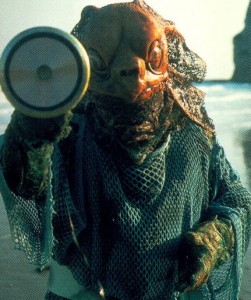

 bloodtide on audio
bloodtide on audio